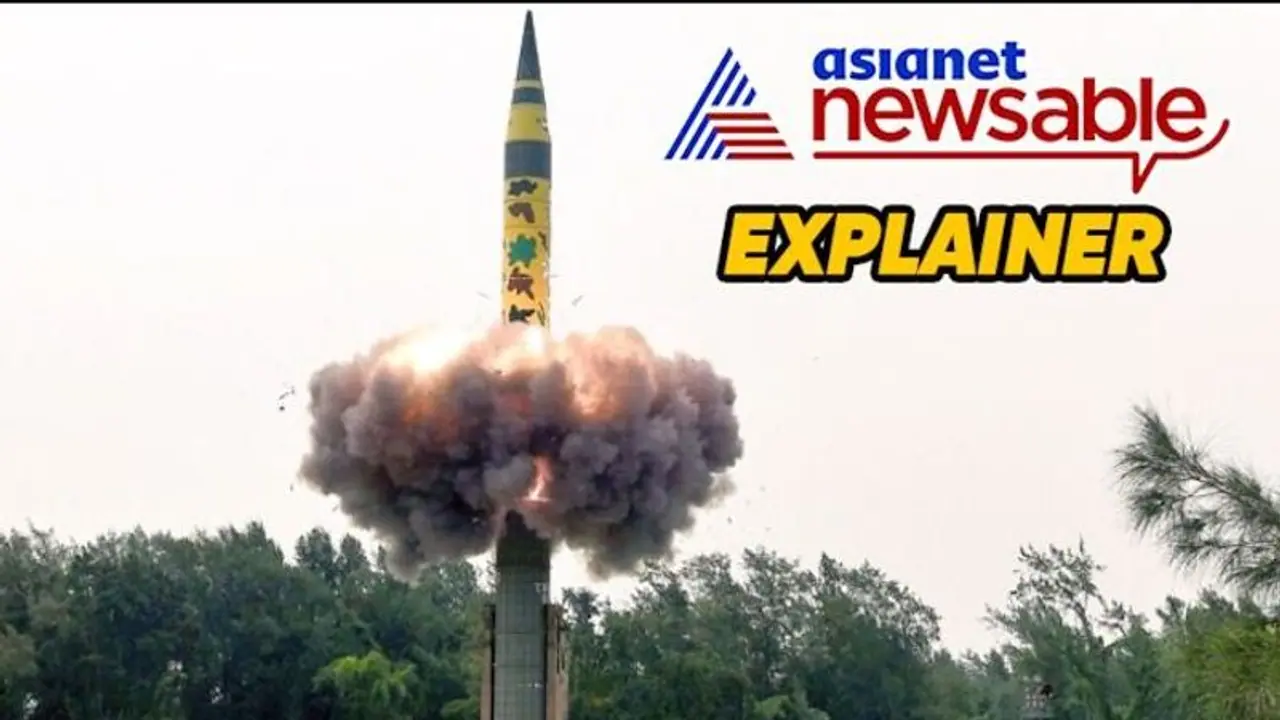Agni-V, developed by DRDO, is a land-based intercontinental ballistic missile with a range exceeding 7,000 kilometers, capable of carrying nuclear warheads. MIRV technology allows a single missile to carry multiple warheads, enhancing its effectiveness, says Girish Linganna
Prime Minister Narendra Modi on Monday announced that Defence Research and Development Organisation (DRDO) scientists had successfully conducted the first flight test of the indigenous Agni-5 missile under Mission Divyastra. The test included the testing of Multiple Independently Targetable Re-entry Vehicle (MIRV) technology. On the microblogging platform X, PM Modi expressed pride in DRDO scientists for the successful first flight test of the indigenous Agni-5 missile with Multiple Independently Targetable Re-entry Vehicle (MIRV) technology under Mission Divyastra.

What is the Agni-V?
Agni-V is a land-based intercontinental ballistic missile developed by the Defence Research and Development Organisation (DRDO) of India. The missile is capable of carrying nuclear warheads and has a range exceeding 7,000 kilometres, with some Chinese researchers claiming it has a range of 8,000 kilometres. Agni-V is a solid-fueled, three-stage intercontinental ballistic missile that is road-mobile and can be stored in canisters.
The missile's capabilities will enable India to target regions across Asia and possibly into Europe. With its extended range, the Indian military can reach all of China from Agni-V bases located in central and southern India, positioning them farther away from China.
What is MIRV technology?
Multiple Independently Targetable Re-entry Vehicle (MIRV) technology refers to a ballistic missile technology that allows a single missile to carry multiple warheads, each capable of being independently targeted to different locations. This technology enhances a missile's effectiveness by allowing it to strike multiple targets with a single launch.
There are several challenges associated with Multiple Independently Targetable Re-entry Vehicle (MIRV) technology. Some of these challenges include:
1. Development and integration: Developing and integrating multiple warheads and associated guidance systems onto a single missile is a complex and technologically challenging process.
2. Accuracy and precision: Ensuring the accurate and precise delivery of each warhead to its designated target poses a significant challenge, especially when multiple warheads are deployed simultaneously.
3. Target discrimination: It can be difficult to accurately identify and prioritize multiple targets, especially in real-time situations where quick decision-making is required.
Which are the other countries with MIRV capabilities?
United States
LGM-30 Minuteman III: The backbone of the US land-based nuclear deterrent, with a range of over 13,000 km and the ability to carry MIRVs.
Russia
RS-28 Sarmat ("Satan 2"): A recently introduced ICBM with a reported range of over 18,000 km and advanced MIRV capabilities designed to carry a large number of warheads.
Topol-M: A road-mobile ICBM with a range of over 10,000 km and MIRV capability.
China
DF-41: China's primary land-based ICBM with an estimated range of 12,000-15,000 km and the ability to carry MIRVs.
France
M51: A submarine-launched ballistic missile (SLBM) with a range of over 10,000 km and MIRV capabilities.
